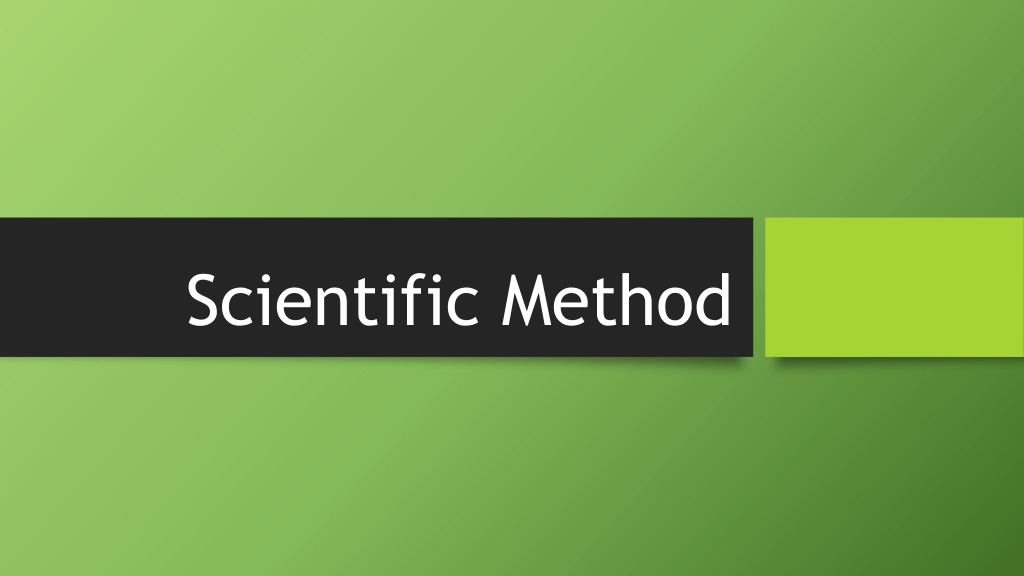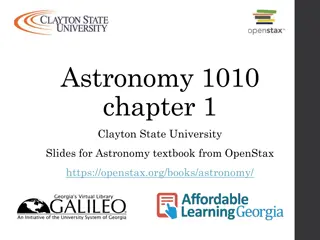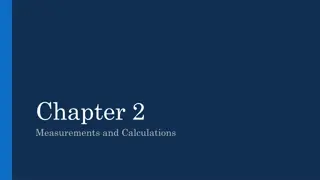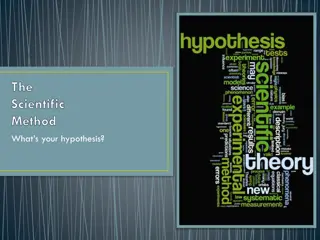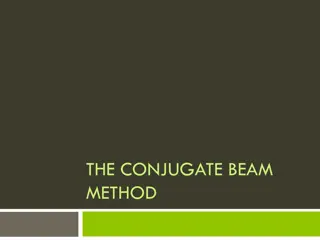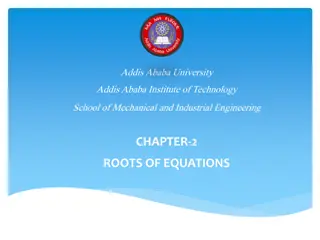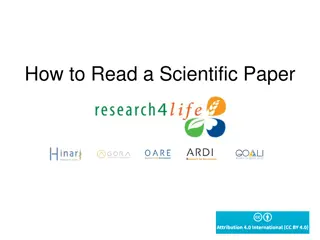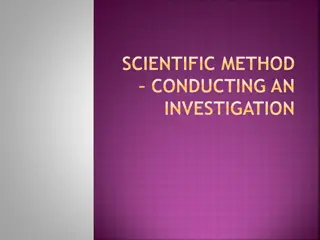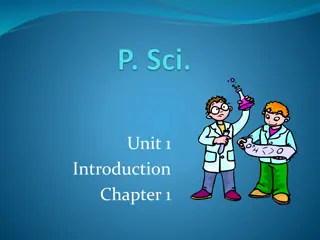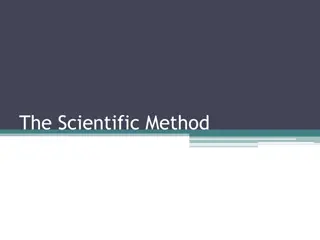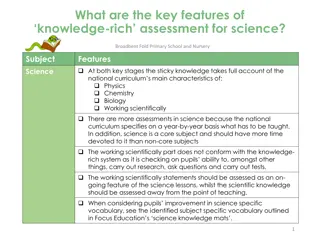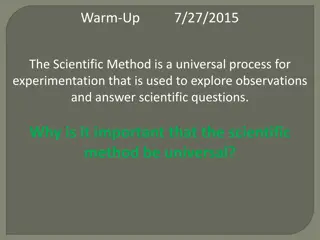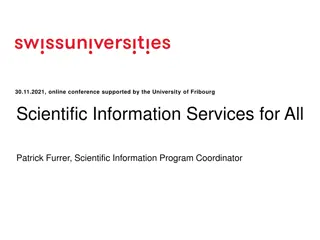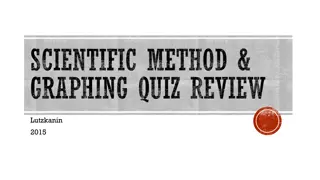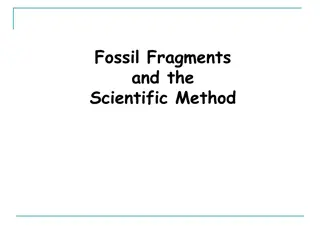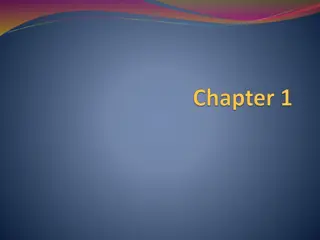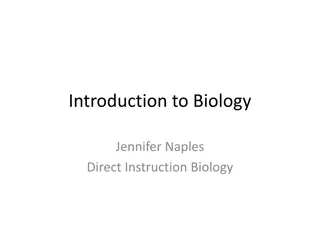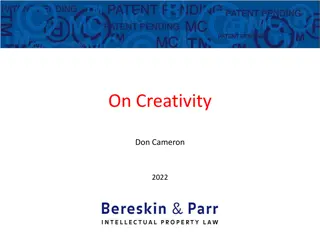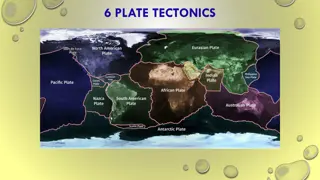Scientific Method and Its Application in Science
Science, derived from the Latin word for knowledge, is a blend of reasoning and factual information. It hinges on observation, experimentation, and the quest for natural explanations. There are no absolute truths in science; our comprehension of nature stems from observation. Two primary scientific approaches are recording observations and performing experiments. The scientific method, a process driven by observations, logic, and experimentation, guides the exploration of questions about the natural world. This method involves steps like making observations, formulating hypotheses, and designing experiments.
Download Presentation

Please find below an Image/Link to download the presentation.
The content on the website is provided AS IS for your information and personal use only. It may not be sold, licensed, or shared on other websites without obtaining consent from the author.If you encounter any issues during the download, it is possible that the publisher has removed the file from their server.
You are allowed to download the files provided on this website for personal or commercial use, subject to the condition that they are used lawfully. All files are the property of their respective owners.
The content on the website is provided AS IS for your information and personal use only. It may not be sold, licensed, or shared on other websites without obtaining consent from the author.
E N D
Presentation Transcript
Science Comes from the Latin word to know Science is both a way of thinking AND a collection of facts generated by the process of science.
Important Characteristics of Science Science relies upon observations and experimentation Allows us to explain and make predictions about the natural world. Seeks natural causes for natural phenomena
Important Characteristics of Science There are no absolute truths in science, and all that we understand about nature come from our ability to observe the world around us. There are two major approaches to practicing science: Recording Observations Performing Experiments
Scientific Approaches Performing Experiments Using the scientific method Recording Observations Often called discovery science Experiments occur when conclusions drawn from observations taken during discovery science, lead a scientist to ask more questions. Discovery science is the process of gathering data simply by observing the world around us.
Scientific Method The scientific method is a process used to find answers to questions about the world around us. It uses observations, logic, reasoning and experimentation. There are certain steps we follow while using this method.
Observations & Hypothesis 1. Observe the phenomenon or problem. OBJECTIVE/PURPOSE - The objective or purpose of the experiment. 2. Create a hypothesis. HYPOTHESIS An educated prediction of what will happen. A hypothesis must be testable and can be proven false. Predicts the cause and effect They are ALWAYS written as If (statement of hypothesis) is true, then (predictions).
Which is the better hypothesis? Why? The color of light may affect plant growth. If plants are exposed to green lights, then these plants will grow taller than plants that are exposed to natural light.
Experimental Design 3. Design and conduct an experiment. Consider your methods (steps to perform the experiment) Consider variables & number of trials Materials needed Carry out a controlled experiment- experiment in which an experimental group is compared to a control group. Only one variable is tested at a time.
VARIABLES: INDEPENDENT VARIABLE (IV) The variable that YOU purposefully change. CONTROL Variable that is used as a standard for comparing your results. DEPENDENT VARIABLE (DV) The variable that responds to the IV. (what you measure)
Terms CONSTANTS- All factors that remain the same during the course of an experiment. Constants are the factors that do not vary between the experimental and the control groups. Ex: Type of plant, amount of water Control is the group that is purposefully kept constant to compare the experimental group (one we are manipulating). They differ by one factor only. Ex: Plants exposed to natural light.
Identify the Variables Nick wanted to see how high an ice cube would float in different temperatures of water. Identify the independent variable. IV: Diff. temperatures of water Mr. McNiece wanted to see how different types of music affected students' pulse rates. She played different types of music: heavy metal, rap, R&B, alternative, pop, country, and classical music. Identify the dependent variable. DV: Student pulse rates
Identify the Variables Mr. McNiece wanted to see how different types of music affected students' pulse rates. She played different types of music: heavy metal, rap, R&B, alternative, pop, country, and classical music. She played each type of music for 20 minutes. What is the constant? The independent variable? Tiffany was investing how fast it took Hayden, her son, to react to different sounds such as a car horn and the doorbell. Identify the independent variable. IV: Different sounds Constant: 20 minute of playing time IV: Type of music
Name the IV, DV, constants and control group. 1. A shopping mall wanted to determine whether the more expensive Tough Stuff floor wax was better then the cheaper Steel Seal floor wax at protecting its floor tiles against scratches. One liter of each brand of floor wax was applied to each of 5 test sections of the main hall of the mall. The test sections were all the same size and were covered with the same kind of tiles. Five (5) other test sections received no wax. After 3 weeks, the number of scratches in each of the test sections was counted.
Floor Wax Scenario- Answers 1.Floor Wax Scenario 1.IV: Type of floor wax 2.DV: Protection against scratches (# of scratches) 3.Constants: 1 liter of floor wax, same size and type of floor tiles 4.Control group: 5 tiles with no wax
Data Collection 4. Collect data. Record and organize. Data Tables and graphs that display the observations and measurements from the experiment. Present the information in a way that allows people to see patterns and make connections (tables and graphs).
Conclusion 5. Write your conclusion. Includes restatement of the hypothesis, data and observations. Explain if your experiment proved or disproved the hypothesis. Suggest new and better experiments.
Important Terms To Differentiate Hypothesis a statement that predicts the likely outcome of an experiment. Must be able to be proven false. Ex: If I stick two logs in quicksand, the heavier one will sink first. Inference a logical conclusion based on prior knowledge or experience Ex: Footprint in mud- Infer that someone was here earlier
Law vs Theory (Scientific) Theory Widely accepted explanation of an idea, broad in scope and applicability. Supported by a large body of evidence. (Scientific) Law Is a statement based on repeated experimental observations that describes some aspect of the world.
One Predicts the outcome experiment Hypothesis falsifiable statement
hypothesis hypothesis hypothesis experiment experiment experiment Unifies multiple hypothesis Well supported Theory of Evolution Theory Big Bang Theory EXPLANATION Predictive Theory of General Relativity Color Theory The Cell Theory
Hubbles law of cosmic expansion Kepler s law of planetary motion observation under specific conditions Universal Law of Gravitation Law Newton s Laws of Motions description Does not explain why* An idea can have both a law and a theory such as the Law of Gravity and the Theory of Gravity. Mendel s Laws of Inheritance
Law vs Theory Theory Law Unifies multiple hypotheses Well supported Is an EXPLANATION Description/observation DOES NOT explain why Usually under specific conditions
The Ice Kings Experiment Ice King was told that a certain itching powder was the newest best thing on the market. Interested in this product, he bought the itching powder to compare it to his usual product. His experiment lasted three days. On Day 1, he sprinkled 10 test subjects with the original itching powder. On Day 2, he sprinkled 10 test subjects with the new itching powder. On Day 3, he sprinkled 10 test subjects with baby powder. The test subjects itched for an average of 30 minutes on day 1, 45 minutes on day 2 and 0 minutes on day 3.
Ice King Experiment IV: Type of itching powder DV: Amount of time subjects were itchy Constants: Amount of subjects Control: Subjects given baby powder
Summary- Choose a letter. A group of middle school students were given a short course in speed reading. The instructor was curious if a monetary incentive would influence performance on a reading test taken at the end of the course. Half the students were offered $5 for obtaining a certain level of performance on the test, the other half were not offered money. IV: A. Presence or lack of money B. Student performance C. Test DV: A. Presence or lack of money B. Student performance C. Test Experimental group: A. Ones offered $ B. Ones not offered $ Control group: A. Ones offered $ B. Ones not offered $
Homework (9/3) Due: Thursday 9/4 Experimental Design Worksheet #3-10 Quia Test Quiz (go to my website, must sign in to Quia to take it). Due: Friday 9/5 Textbook covered Parental confirmation sheet-signed
